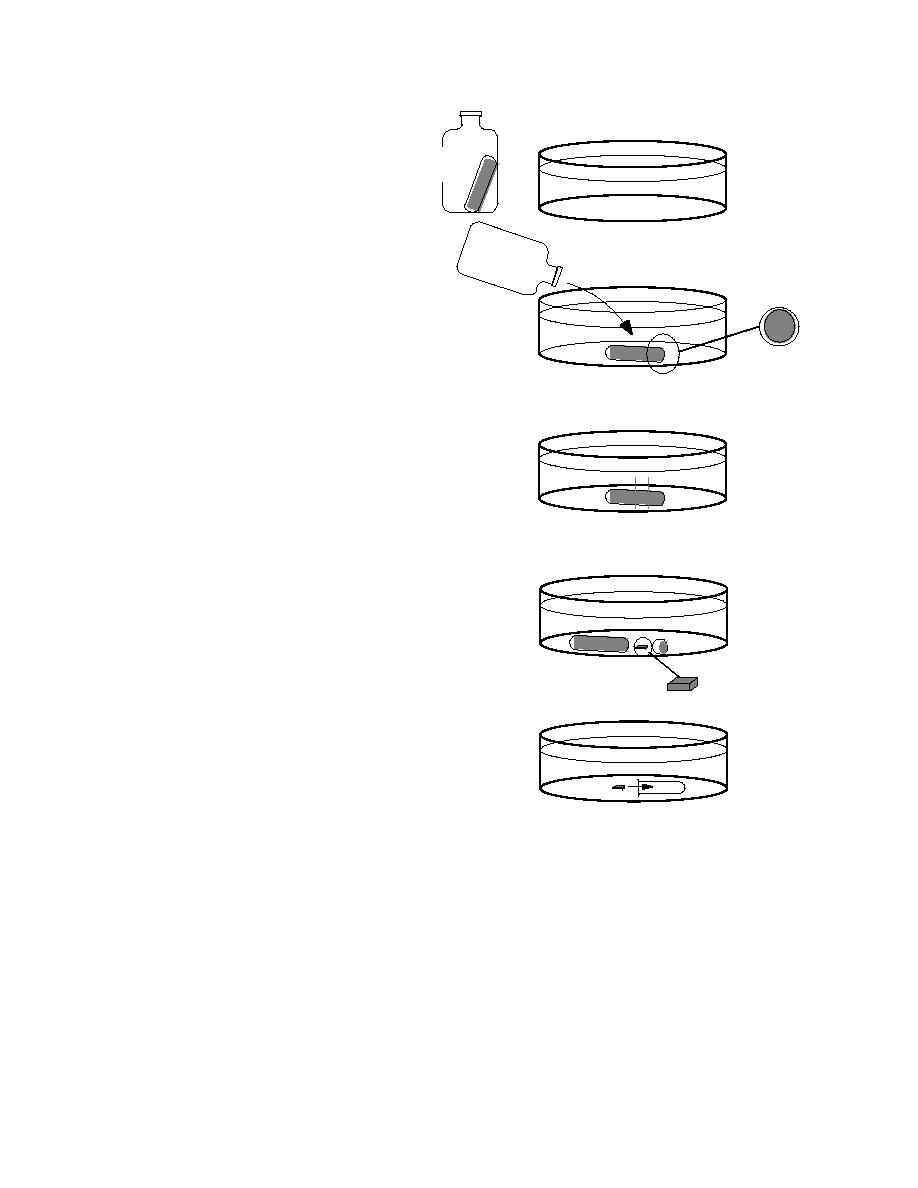
a. Reagent grade water is placed in
White
a glass dish. The water will prevent
Phosphorus
Dish
the WP from igniting.
w/Water
b. The white phosphorus stick must
be quickly transferred to the dish.
c. Since the surface of the white
phosphorus stick is oxidized, a piece
from the interior of the stick must
be obtained by slicing through the
stick.
d. All freshly cut surfaces should be
lustrous.
e. The piece of white phosphorus is
transferred to a small test tube.
Figure A1. Procedure for producing white phosphorus particles.
phosphorus by slowly releasing the plunger of the positive displacement micropipet (Fig.
A1h). Being certain to keep the tip of the micropipet underwater, transfer each droplet to an
individual test tube (two droplets must not be placed in an individual test tube since the
molten white phosphorus droplets will merge to form a larger droplet) (Fig. A1h). Test tubes
may be removed from the beaker as needed, and replaced with new test tubes. To maintain
the water level, test tubes should be filled with water prior to placement in the 1-L beaker. If
several particles are made, the water may need to be reheated by returning the 1-L beaker to
the hot plate. Be certain to remove the 1-L beaker from the hot plate prior to making more
droplets.
To solidify the droplets of white phosphorus, place the test tubes containing the droplets of
white phosphorus in a refrigerator at 4C (Fig. A1h). White phosphorus can supercool (i.e.,
10



 Previous Page
Previous Page
